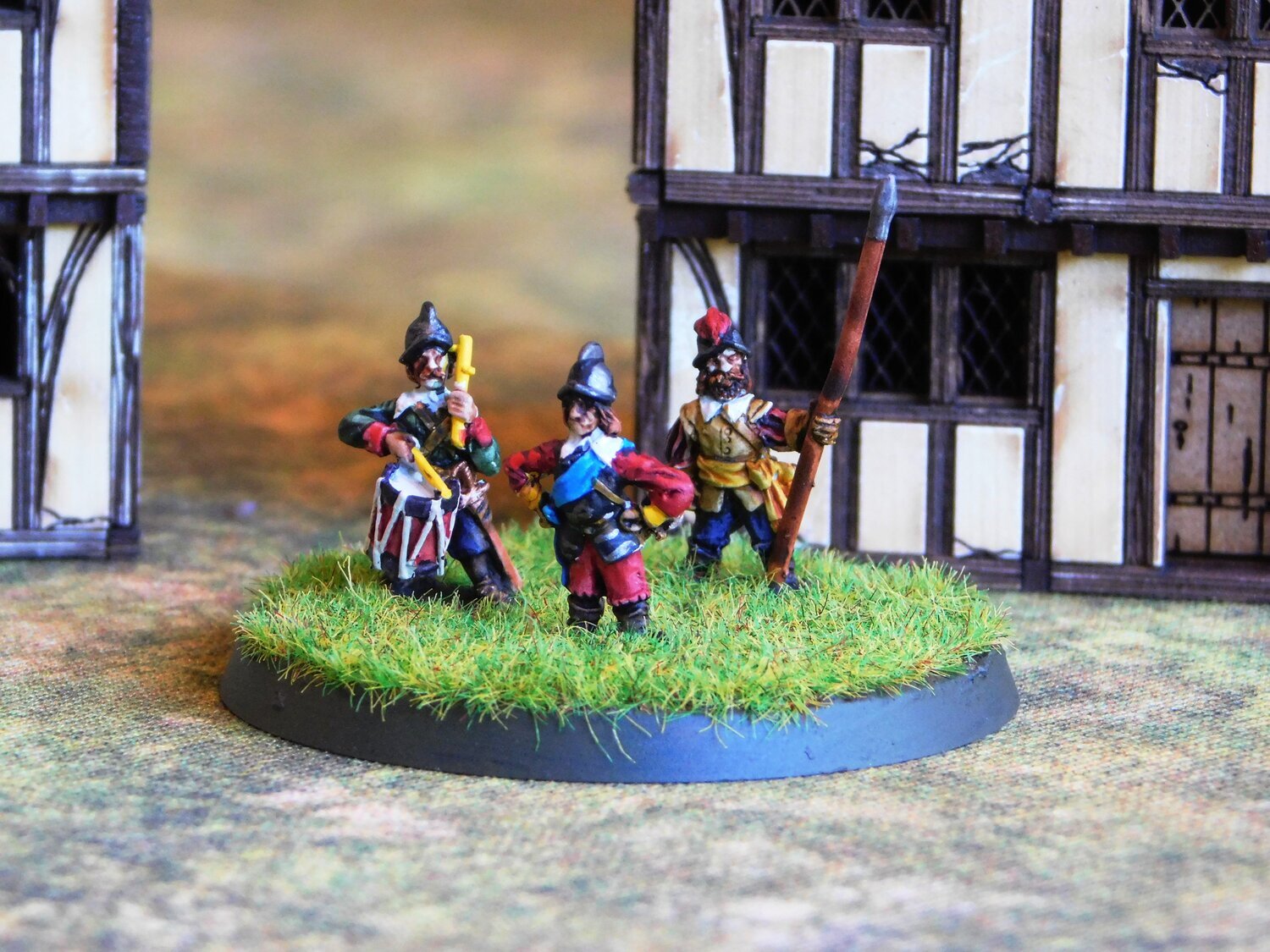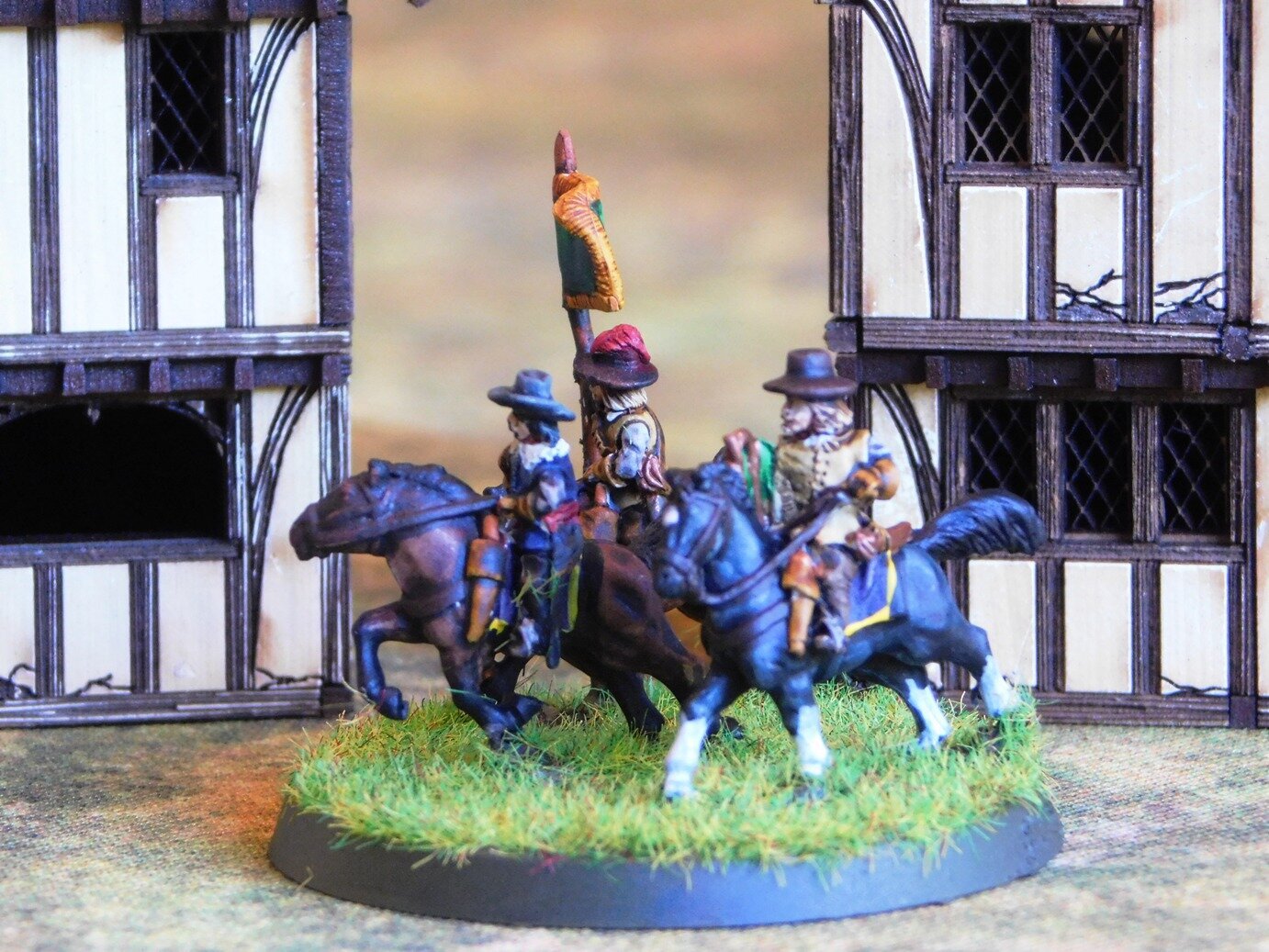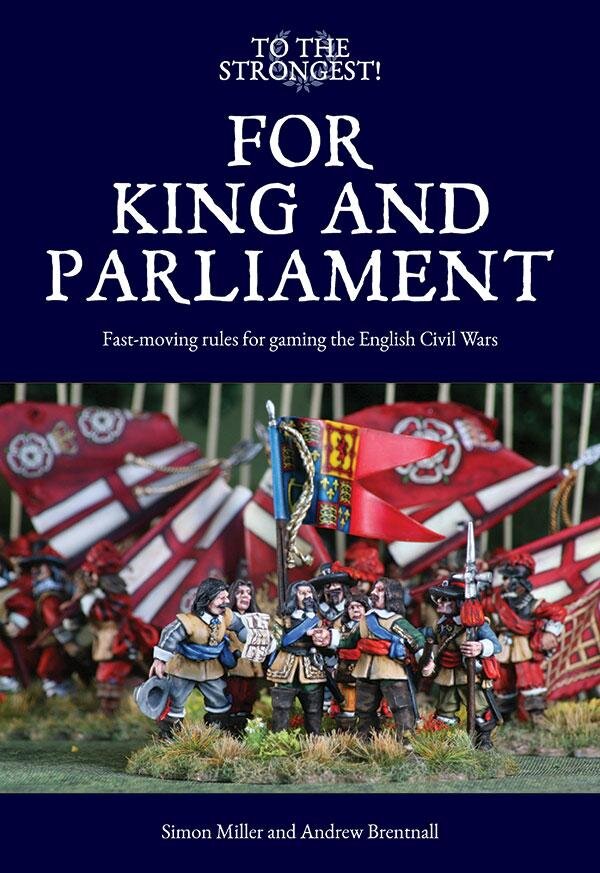Cuirassiers!
/I think that Cuirassiers in the full plate sense might have been dying out by the time of the English Civil War, but the book assures me that I might need a smallish unit for some scenarios, so it was off to the Internet to buy some figures and then to paint them.
These are 15mm Peter Pig figures painted using GW Contrast Paints. The horses are Cygor Brown thinned down 50/50 with the Contrast Thinner. The armour is Templar Black very lightly dry-brushed with Leadbelcher, except for the commander at the far end, who has a light dry brush of a dark gold colour.
The unit is shown as a Dutch- rather than the more modern Swedish-style formation i.e. two ranks deep relying on brute force rather than one rank deep relying on firepower. It’s still a smallish unit: being only four figures wide rather than the usual nine (which is going to make the larger Dutch-style units very heavy indeed at 18 cavalry figures to a base!).
The bases are Warbases vehicle bases flocked all over. The flowers are from Boontown, and are absolutely excellent.






















